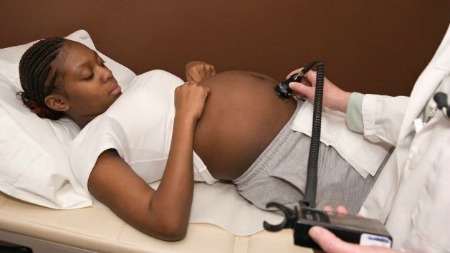
Pregnancy rates among Black teenagers is on a steady decline, according to a recent study by the National Center For Health Statistics, which is a part of the Centers For Disease Control.
Between 1990 and 2009, pregnancy rates fell by 51 percent for non-Hispanic Blacks and non-Hispanic White teens. Sarah Brown, ceo of The National Campaign to Prevent Teen and Unplanned Pregnancy, attributed the drop to three reasons, “More teens are waiting to have sex; they also report fewer sexual partners and better use of contraception. In short, the credit for this remarkable national success story goes to teens themselves.
Unfortunately, precious few adults are aware of this national success story. In fact, nearly half of Americans incorrectly believe that the teen pregnancy rate in the United States has increased over the past two decades.”
Per the study, pregnancy rates reached historic lows for minority teens in 2009, reaching 102.1 per every 1,000 women ages 15-44. That number is the lowest in 12 years; only 1997′s 101.6 rate has been lower within the last 30 years.
Rates have also declined 10 percent each for married and unmarried women since 1990; however, they were found to be highest amongst women in their 20s.
The overall number and rate of pregnancy was highest for women ages 25 to 29 in 2009. This was followed by women ages 20 to 24.
Abortion rates saw a strong decline between 1976 and 2009. The 2009 abortion rate was 32 percent lower than 1990′s rate.
In summary of the data, the CDC noted the changes to the shifting economy and better birth control practices among women:
It has been suggested that the declining economy, beginning in 2007, has likely played a role in the decreased rates for women under age 40. For teenagers, evidence shows that trends in the behavioral determinants of pregnancy are consistent with the declines in their pregnancy rates. For example, the latest NSFG data show a continuation of a long-term downward trend in the percentage of teenagers who are sexually experienced, and a long-term upward trend in the use of contraception at first se. The degree to which pregnancies are unintended or unplanned also contributes to understanding the rates, not only for teenagers, but for women of all ages.”
For more info, click here.


